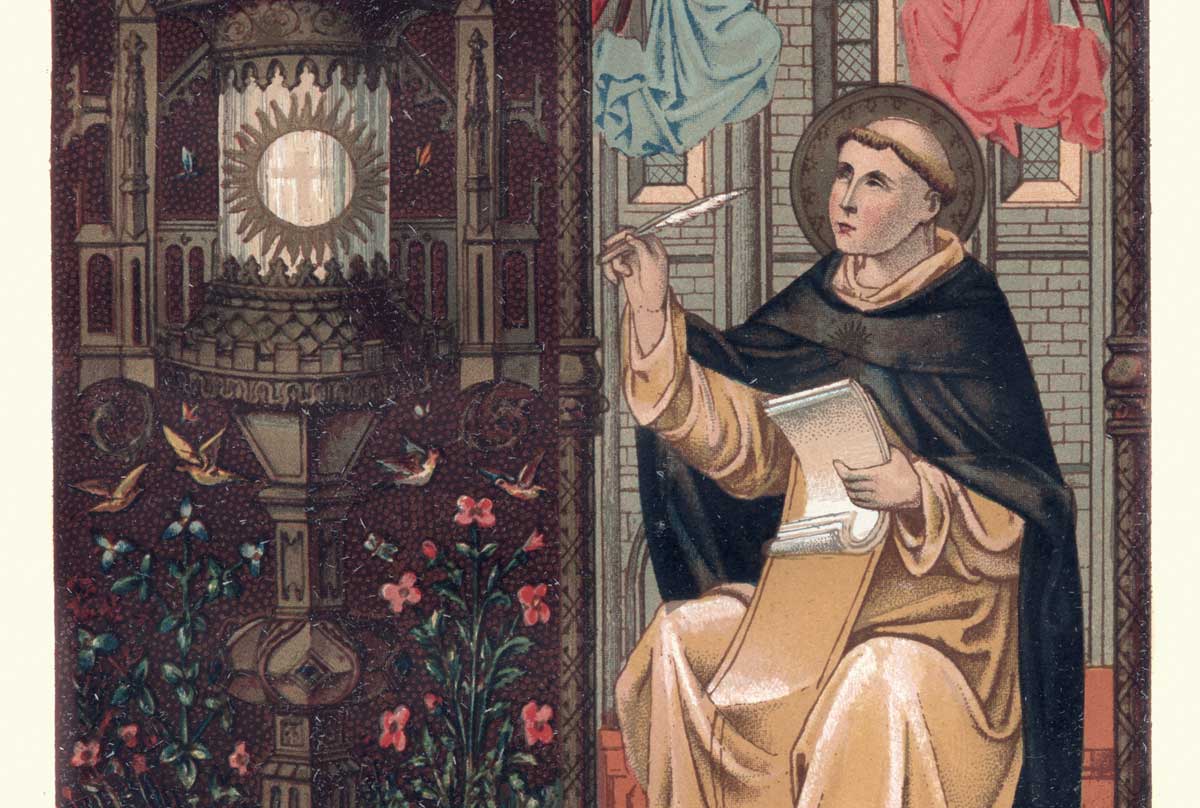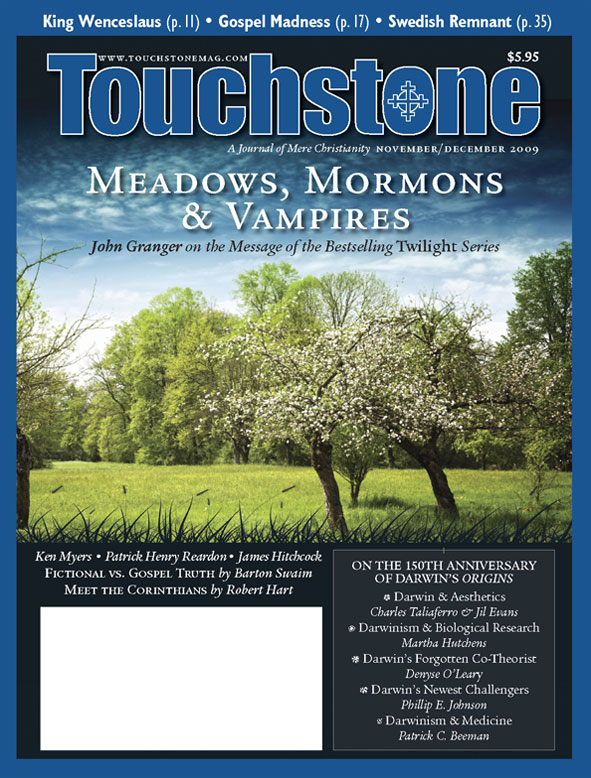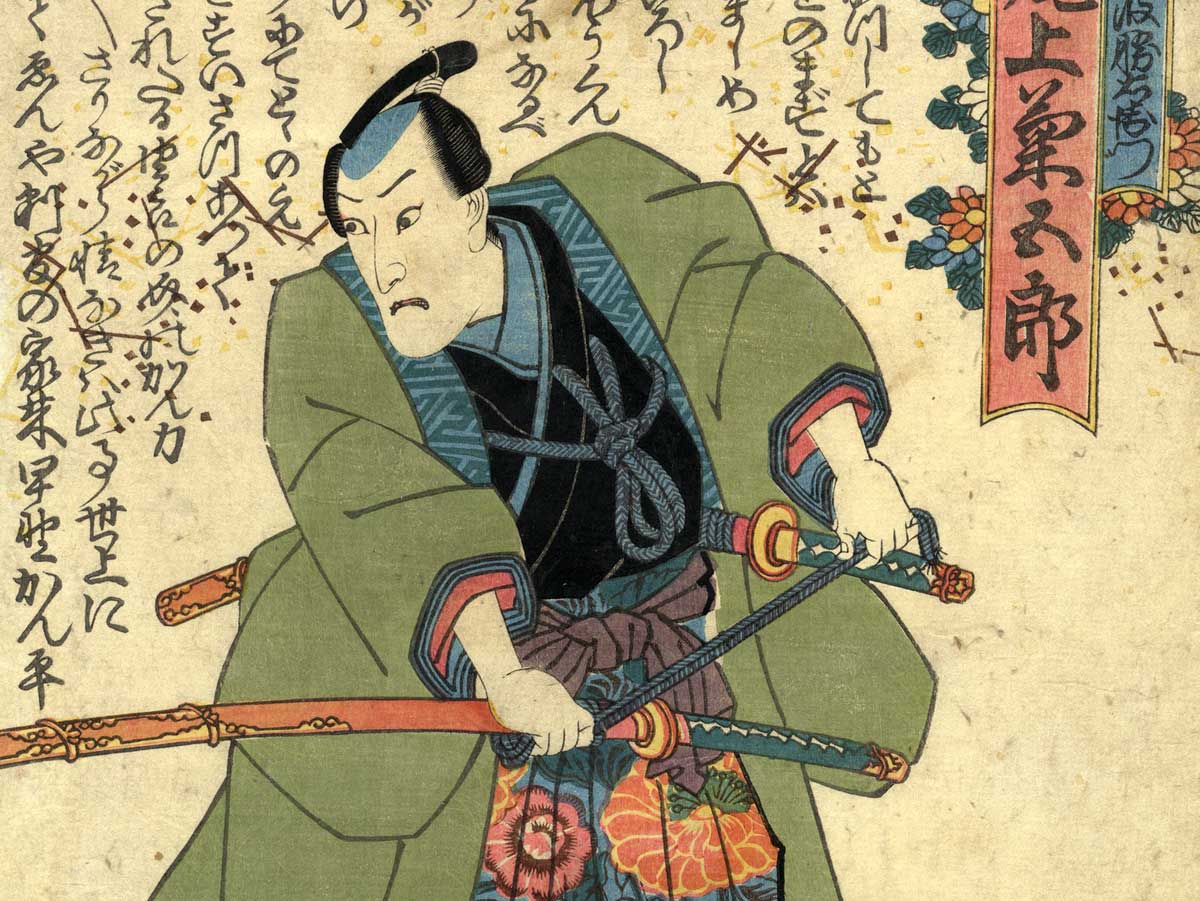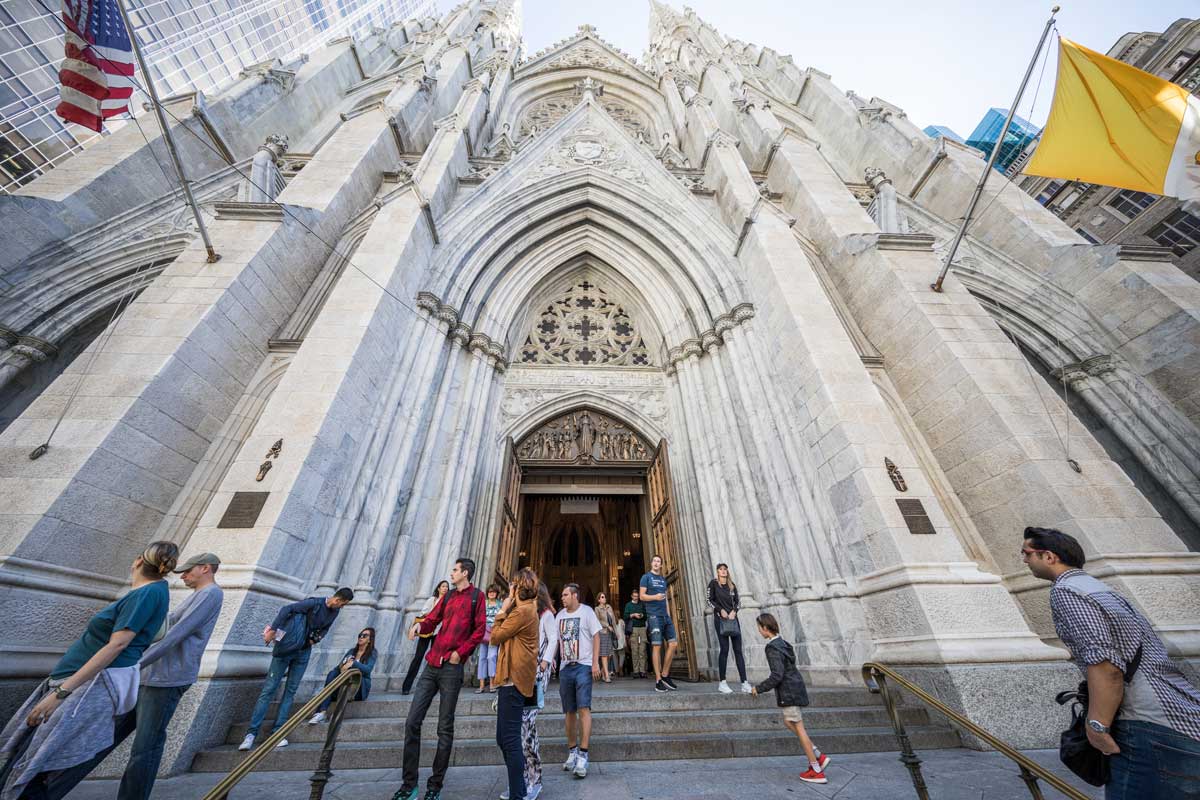The Origin of Aesthetics
Looking for Beauty & Justice 150 Years After Darwin’s Classic
by Charles Taliaferro & Jil Evans
In September of 2006, a philosopher and two visual artists were ushered into the office of a major curator of a leading museum in Amsterdam. The three of us had secured the appointment to discuss the genre of menagerie paintings. The artworks we were interested in were seventeenth-century paintings of the natural world, depicting a rich, diverse abundance of animals and plants.
The overall mission of our little group, of which this visit composed a part, was to consider the artistic treatment of nature before and after Darwin. Our initial hypothesis was that the pre-Darwin menagerie paintings, influenced by both Calvinist and Catholic thought, displayed a vision of a restored or redeemed natural world. These works showed nature at peace, both beautiful and just. We were enchanted by what we saw as the confident celebration of the goodness of the natural world as God’s re-creation, and we were keen to see how the natural world was re-envisioned in the visual arts in light of Darwinian evolution.
The meeting, however, was quite awkward, because while the curator confirmed our hypothesis, he showed little interest in the menagerie paintings. He referred to them as quite common and said they were considered merely decorative in historical and aesthetic terms by art historians across the globe. “These works are simply unimportant,” he declared.
Fumbling for a way to pique his interest, we took turns offering possible ways in which the menagerie paintings could be seen as significant: They might involve a fascination with the exotic, or they might depict a return to Eden through Christ, or perhaps, since they portrayed many of the animals brought back to the Netherlands by explorers and colonists, they marked the heightened social status of their owners. “Yes, yes, these are all probable readings [of these incredibly unimportant paintings]” was the impatient response. While we furtively searched our notes for something, anything, that might redeem the appointment, the curator suddenly asked: “Are you interested in black people?”
The three of us and the curator were Caucasian. Although startled by the question, one of us managed to say, “Oh, very much indeed!” The curator then directed us to a recent museum-published journal, which contained an article documenting what is believed to be the earliest portrait of an African man in the Netherlands, dating from the sixteenth century.
Slavery & the Moral Imagination
Later that night, after trying to recover from our appalling performance as scholar-artists, the three of us began to wonder about the meager representation of black Africans in Dutch artwork of the sixteenth and seventeenth centuries, which was during the height of the Dutch slave trade. This was a striking omission because, while it is largely assumed that the Atlantic slave trade involved mostly the Spanish, Portuguese, French, and British, the Dutch actually dominated the global slave trade for a brief time in the seventeenth century (and were also the most expansive European power trafficking in slaves in the history of Southeast Asia). Moreover, when the British finally outlawed slavery in their territories (in 1834), the Dutch settlers in southern Africa persisted in holding slaves, moving their farms to the margins of British influence.
The Dutch persistence in holding slaves and in seeing black Africans merely as assets was sometimes “justified” on the grounds that these Africans were biologically nearer to animals than human beings. While some simply argued that black Africans were an inferior human race, others actually contended that they were closely related to apes.
This kind of reasoning, horrific though it is, actually gained ground in the eighteenth and nineteenth centuries, and historically came to eclipse the case for slavery based upon the apparent biblical condoning of slavery and the so-called curse of Ham (Genesis 9:20–27 was used to justify enslaving black Africans on the grounds that they were descendents of Ham).
Well, we reasoned, if black Africans were considered so closely related to non-human animals, why weren’t they depicted in the menagerie paintings, in which the whole realm of nature is redeemed and restored?
We conjectured that one reason why it would have been problematic to place them in these paintings is that doing so would have rendered explicit the difficulty of actually believing that black Africans were inferior or that whites were entitled to enslave them. Picturing black Africans in an aesthetically rich, redeemed nature would have been difficult to square with the degrading and violent ways in which they were actually treated.
Art Influencing Ethics
In his book Humanity, Jonathan Glover has persuasively documented the ways in which violence against groups of people is systematically preceded by a denigration of them through language and art. The converse may also be true. A current movement in philosophy holds that the key to moral development is what Martha Nussbaum calls the moral imagination. According to Nussbaum, a disciplined ability to see and picture the world from the standpoint of other persons is foundational to ethical reflection. This is not a radically new insight—arguably, the Golden Rule invites this use of the imagination—but Nussbaum’s work draws attention to the importance of the arts in stretching people’s sense of values and helping us achieve an expanded sense of moral community.
In The Problem of Slavery in Western Culture, David Brian Davis has pointed out that the positive conception of the beauty of human persons, as advanced by the seventeenth-century group of English philosophers known as the Cambridge Platonists, helped build a case against the exploitation of black Africans. Their Platonic Christian aesthetic contributed to the emancipatory moral imagination.
The eventual overturning of slavery in the West involved many factors, of course: religious, moral, political, economic, scientific, and so on, but the aesthetic should not be overlooked. Aesthetic dimensions came into play not just in the advancement of humane, positive portraits of those being demeaned, but also in the pictorial display of the horror of slavery. One of the most effective instruments in the abolitionist movement in Britain, for example, was a mass-produced drawing of the slave ship Brooks in the eighteenth century (documented in the compelling book The Slave Ship: A Human History by Marcus Rediker).
According to the view of aesthetics and ethics celebrated by the Cambridge Platonists, our innate sense of horror and beauty, of justice and injustice, is seen as a God-given instrument by which we can discover God’s provident will. But what happens when, as in Darwinian evolution, aesthetics and ethics are no longer understood as purposively created to be normative guides to the beautiful and the good? Did Darwin himself give any weight to aesthetics and ethics? Did he consider them normative—that is, authoritative standards of correctness? If so, was he able to account for their normativity?
Darwin’s Aesthetic
Darwin famously claimed to be uninterested in poetry, and it is tempting to think that, in an age of Wordsworth and Coleridge, this meant that he had no aesthetic. In fact, however, aesthetics can be seen to have played a vital role in both Darwin’s science and his ethics.
In his scientific work, Darwin compared himself to a machine “grinding general laws out of large collections of facts,” and he claimed that “a scientific man ought to have no wishes, no affections—a mere heart of stone.” Yet, as the three of us came to explore the Darwin papers at Cambridge University and to spend some time in Darwin’s house in Kent, and later, when the two visual artists among us shadowed Darwin in the Galapagos Islands, we became increasingly aware of what might be called his aesthetics, his sense of beauty and ugliness.
Darwin’s professed coldness in his scientific inquiry can itself be seen as evidence of an aesthetics or sense of beauty in scientific facts on his part. In preparing for what was to become On the Origin of Species, he wrote: “I am a Croesus overwhelmed with my riches in facts and I mean to make my book as perfect as ever I can.”
Our group was also struck by Darwin’s many drawings of what he referred to as “the tree of life.” As Howard Gruder has argued, Darwin’s use of this imagery was not merely a matter of cognition and theory, but also a matter of art and aesthetics:
It may be argued . . . that Darwin’s diagrams are only conceptual tools for theoretical thought and have no aesthetic significance. Then why the evident pleasure in the actual drawings, the constant search for the right metaphor, the emotional excitement conveyed by his punctuation and frequent resort to a high-flown style? There is exactly that combination of feeling with concern for form and content that we have in mind when we speak of an aesthetic act. As well say that anamorphoses are not art, or that Dürer’s use of instruments or Leonardo’s studies of human anatomy have no aesthetic significance. Only if we presuppose a divorce between art and scientific thought would we be tempted to turn a blind eye to the aesthetic side of Darwin’s imagery.
Darwin’s aesthetic response to the natural world was integral to the development of his theory of evolutionary biology. His doubts over theism were motivated (in part) by his sense of the ugliness and waste of some parts of the natural world. His desire for a nearly “perfect book” accounting for the natural world can easily be understood as a longing for an ideal reading of nature.
Darwin’s Ethics
As for ethics, consider Darwin’s view of slavery. While he was far from free of racist ideas and attitudes, Darwin shared with other abolitionists a moral as well as an aesthetic outrage over slavery. Famously, during his five-year voyage on the HMS Beagle, the only time he quarreled with the ship’s captain, Robert FitzRoy, was over the legitimacy of slavery in Brazil, which Darwin passionately opposed. Darwin was clearly repelled by the ugliness of slavery:
On the 19th of August we finally left the shores of Brazil. I thank God, I shall never again visit a slave-country. To this day, if I hear a distant scream, it recalls with painful vividness my feelings, when passing a house near Pernambuco, I heard the most pitiable moans, and could not but suspect that some poor slave was being tortured, yet knew that I was as powerless as a child even to remonstrate. I suspected that these moans were from a tortured slave, for I was told that this was the case in another instance. Near Rio de Janeiro I lived opposite to an old lady, who kept screws to crush the fingers of her female slaves. I have staid in a house where a young household mulatto, daily and hourly, was reviled, beaten, and persecuted enough to break the spirit of the lowest animal.
Darwin’s response here is not one of disinterested, detached judgment, but of palpable rage at what he sees as profound injustice. This is not to discredit disinterested, detached judgment, but simply to point out that there was also a visceral, deeply aesthetic, response by Darwin to what he took to be ugly in slavery.
Challenged by Wallace
Given the role of aesthetics in his science, and his employment of aesthetically fused moral judgments against slavery, combined with his rejection of a consistently benevolent, meticulously provident God, it is no surprise that Darwin faced in his lifetime a challenge about the sufficiency of his theory of evolution to account for aesthetics. Could his theory alone explain the authority and reliability of aesthetics in morality or science? A substantial challenge on this matter came to Darwin from his contemporary Alfred Russel Wallace.
In the debate that followed Darwin’s publication of The Descent of Man, Wallace posed this question: How do we account for the human creation and exploration of art over against its absence in the natural world? Darwin sought to locate proto-aesthetic impulses in the natural world in the area of mate selection and reproductive success, but, as Wallace argued, such explanations fall radically short of the kind of aesthetics of beauty (and ugliness) we find among human beings. As Anthony O’Hear writes:
We hear no stories of animals admiring some aesthetic feature of their environment reflectively and disinterestedly, or of connoisseurship before depictions of goddesses. And even if we were able to discern rhythm and melody in the song of a bird, it is far from clear that the birds do. Even less do they treat their songs aesthetically, using them as material to develop musically, as, by contrast, the composer Messaien tried to do.
The Authority Problem
But the problem of beauty that Wallace raised goes even deeper and becomes intertwined, in fact, with the problem of ethics. Simply stated, it is this: Given the Darwinian view that all purposive activity and consciousness is, at base, the work of blind, non-purposive forces, why give any transcendent weight or authority to either the aesthetic sense of beauty and ugliness or the moral sense of right and wrong?
Consider the following passage, in which Darwin notes that, according to his evolutionary theory, what we think of as evil actually leads to reproductive success among some creatures, and yet, being loathe to accept the implications of this for human behavior, he seeks somehow to account for the development of a conscience:
If, for instance, men were reared under precisely the same conditions as hive-bees, there can hardly be a doubt that our unmarried females would, like the worker-bees, think it is sacred duty to kill their brothers, and mothers would strive to kill their fertile daughters; and no one would think of interfering. Nevertheless, the bee, or any other social animal would gain in our supposed case, as it appears to me, some feeling of right and wrong, or a conscience. For each individual would have an inward sense of possessing certain stronger or more endearing instincts . . . an inward monitor would tell the animal that it would be better to (follow) one impulse rather than the other . . . the one would have right and the other wrong.
But even if “social animals” were somehow able to attain an “inward monitor,” how would they know it was trustworthy? The problem persists, for both aesthetics and ethics: Without a benevolent God of creation, there is no guarantee that either the moral conscience or the aesthetic sense of beauty and ugliness is proper and should be given any binding authority. We may feel the ugly shame of slavery, and this sense of its ugliness and shame may be perceived as wholly fitting, but if all such responses are wholly determined by non-moral processes, why trust them? If we persist in the notion that blind, non-purposive forces drive the natural world, what foundation can we develop for the authority of either aesthetics or ethics?
The Darwinian Michael Ruse observes, “Morality is just an aid to survival and reproduction, and has no being beyond this.” But don’t we need something “beyond” to avoid the problem Darwin identified? If, for example, survival and reproduction required murder and slavery, wouldn’t murder and slavery have to be justified in evolutionary ethics?
Two Alternatives for Aesthetics
The worry about the soundness of Darwinian evolution in providing a full account of cognition, reason, and ethics is well known. (In fact, the general argument about accounting for the mind in terms of mindless forces has a rich history from Plato to Plantinga.) Our group’s intent in participating in the debate over Darwin and contemporary evolutionary theory is to explore the consequences and challenges of this theory specifically for the aesthetics of beauty and justice.
We suggest, at this stage of our inquiry, that there are two alternatives about art and aesthetics: One is that artistic responses to the natural world may signal great, transcendent values, as (on our reading) the menagerie paintings do in depicting the concord of justice and beauty in the natural world. The other alternative is that even our greatest art is something that has value mainly and fundamentally in terms of reproductive success. Anthony O’Hear offers the following, succinct description of the current state of affairs:
Either . . . art and aesthetic experience really do point to some transcendence of the material world; in which case, evolution cannot give us a full account of human life and experience. Or, alternatively, art is a purely human creation and aesthetic experience has no transcendent dimension. In which case, something like an evolutionary explanation of these phenomena would in all likelihood be called for, even if we are at the moment far from any such account. At any event, any sense of transcendence aesthetic phenomena evoke would itself be illusory.
Illusory Force?
As an agnostic, O’Hear is in the position of being unable to fully affirm the first alternative: the transcendent power of aesthetics and art (as well as ethics). And because of the Darwinian opposition to theism, the second alternative requires even the “sense of transcendence” to be deemed illusory. Yet, as we noted at the outset, there remains the fact of such judgments as the perceived ugliness and injustice of slavery, for example, being made by Darwin and many others who hold to his theory. Hence, there is still the problem of how Darwinists can fully ground these judgments.
One who holds a theistic point of view has little difficulty in recognizing and accounting for the normativeness of aesthetics in science, ethics, and art. But one without such a view is hard-pressed to regard the concept of an intrinsically valuable natural order of the world as anything but an illusion. This conclusion says nothing either way about evolutionary biology itself, but only calls into question the sufficiency of evolutionary theory to provide a normative aesthetics.
The menagerie paintings portray a natural world of fecundity, richness, and inherent value. We have suggested that these paintings also provide some evidence of a guilty European mind unresolved as yet to explicitly and comprehensively oppose the slave trade. But however one reads these pre-Darwinian depictions of the animal world, he is looking into a world where beauty and ugliness have real authority and moral force: The just world is truly beautiful, and human injustice is genuinely ugly.
In a post-Darwinian world, aesthetics still plays a substantial role in morality, art, and science, but it is not at all clear that, even for Darwinians, an evolutionary framework can fully account for this role. •
The Dirt on Peacocks
One way to highlight the larger point that Darwinian materialism fails to ground beauty and ugliness as fundamental parts of reality as opposed to mere epiphenomena of some blind evolutionary process is to point out how Darwin’s theory utterly fails to account for extravagant beauty in nature.
Take, for instance, peacocks. The huge tails hardly make for a more nimble bird. They’re like giant “eat me” signs for lurking predators. Why would nature select for them?
Darwin’s answer? Sexual selection: The pea fowl really dig those big colorful tails.
Yes, but this explanation just moves the problem; it doesn’t solve it. We can see why nature would select for pea fowl that like faster peacocks, more alert peacocks, peacocks that can run off the other peacocks using their bigger pea muscles. But why would nature select for pea fowl that prefer peacocks with tail feathers so large that they slow them down? Perhaps because the large tail feathers indicate health and vigor? But again, this response moves rather than solves the problem. Why would nature select for a branch of peacocks that necessarily exhibit health and vigor through tail feathers so large that they slow them down?
Dirt under the rug is still dirt. Darwin’s theories of natural and sexual selection fail to explain extravagant beauty in animals such as the peacock.
— Jonathan Witt
subscription options
Order
Print/Online Subscription

Get six issues (one year) of Touchstone PLUS full online access including pdf downloads for only $39.95. That's only $3.34 per month!
Order
Online Only
Subscription

Get a one-year full-access subscription to the Touchstone online archives for only $19.95. That's only $1.66 per month!
bulk subscriptions
Order Touchstone subscriptions in bulk and save $10 per sub! Each subscription includes 6 issues of Touchstone plus full online access to touchstonemag.com—including archives, videos, and pdf downloads of recent issues for only $29.95 each! Great for churches or study groups.
Transactions will be processed on a secure server.
more on evolution from the online archives

23.6—November/December 2010
Darwin, Design & Thomas Aquinas
The Mythical Conflict Between Thomism & Intelligent Design by Logan Paul Gage
more from the online archives
calling all readers
Please Donate
"There are magazines worth reading but few worth saving . . . Touchstone is just such a magazine."
—Alice von Hildebrand
"Here we do not concede one square millimeter of territory to falsehood, folly, contemporary sentimentality, or fashion. We speak the truth, and let God be our judge. . . . Touchstone is the one committedly Christian conservative journal."
—Anthony Esolen, Touchstone senior editor












